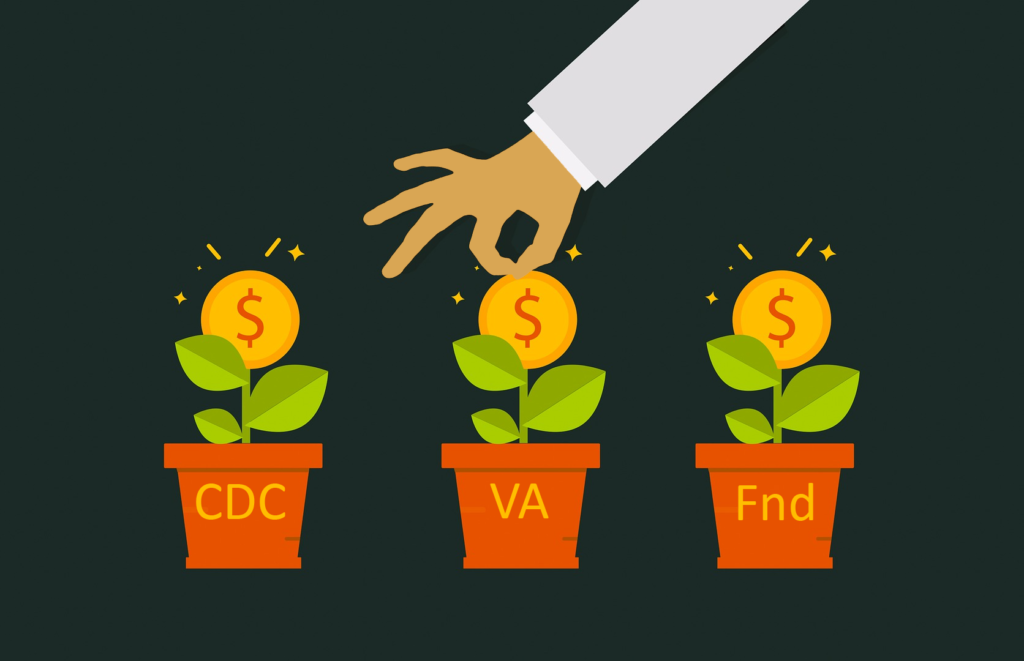Diversify Your Funding Portfolio
By Rebecca Helton and Raymond D. Blind

Just like a retirement portfolio, a wise strategy to maintain your research funding is to diversify. You never know how funding priorities at agencies will change, so the more baskets holding your eggs the better. You can do this both within the NIH and via foundation funding.
NIH
Getting multiple, concurrent grants through the same institute is usually far more difficult than getting that first big grant. Some institutes prioritize more equitable distribution of limited resources, i.e. funding more investigators each with less support, while other institutes tend to fund fewer investigators each with more support. This is something you can talk to your program official about.
Reading the funding priorities and RFAs of your relevant institutes will help get your proposal to the right study section and to the institute most likely to fund your work. But you should also think a little more creatively. Perhaps you can tweak your questions a bit to get your proposal into a different study section. For example, its often possible that more disease-centric experiments can be re-purposed to address more fundamental aspects of biology, which might get your proposal sent to a more basic science-centered study section. The same principle holds for which institute you request in your applications. If you already have an R01 from Institute X, it’s a wise plan to imagine how you might tweak your next submission so it’s a fit for Institute Y. The NIH Reporter tool allows you to search all grants funded through a particular study section – this can be helpful in seeing what a study section tends to fund. You can also use NIH Matchmaker to see what different institutes are funding.
Another way to leverage your expertise is to consider new and different ways to re-use data. An experiment you originally did for funded Project X could (and should) be used as preliminary data for new Project Y. Experiments designed such that the data can easily be used to answer multiple distinct scientific questions can help you do that. For example, many disease models are based on recapitulating a “physiologically relevant” environment. However, an experiment done under physiological conditions can also be thought of as a purely orthogonal validation of an observation made in vitro. Two birds one stone, so to speak.
If you have time and can pace yourself appropriately, it’s also possible to submit independent proposals within the same cycle for review by CSR/NIH, or “adjacent cycles.” Submission rules change so you should always check with your program official. Of course, you should always only submit your best, highest-quality work, and never send two proposals to the same study section. But why might you want to do this? Your early stage and new investigator status is determined by the date you submit a proposal to CSR, not by the date your proposal is reviewed, goes to council, or the standard due dates for proposals. Until a notice of grant award is issued, any proposal is just pending, and anything can happen at Council, including a decision not to fund. Thus, your early stage and/or new investigator status remains intact until the day that a notice of grant award is issued, regardless of how many of proposals you have pending.
Also, study sections often review new investigators first thing in the morning, before reviewers get cranky. I consider that alone to be a huge advantage, and of course you need every advantage you can get.
Building a relationship with your program official is critical. The PO can help you understand how to tune your work to a study section’s interests or an institute’s goals. Some POs will read your aims page and tell you if it’s the right fit for a particular RFA or study section, or give you other options to consider. A good PO you have a relationship with can also go to bat for your proposal if it’s on the bubble. At council, if there’s money left, POs can pull up grants with slightly-less-than-fundable scores and advocate for them. Be the first one your PO thinks of for this kind of opportunity! While you’re chatting with your PO, ask when your proposal has been officially funded – the answer is always when the notice of award is issued.
Program officials are the “deciders” in many ways, providing recommendations to Council as to what grants should be funded, based on CSR review and institute priorities. Thus, if you’re starved for information about the likelihood your proposal will be funded, a good question you might ask your program official after you’ve gotten your score might be, “Do you intend to recommend my proposal for funding at Council?”
You can also communicate with your PO the importance of funding a particular proposal in guiding what path your research program will follow. It’s hard to do research that meets the goals of an institute without the funding to do so, and it can be even harder to justify to your chairperson why you’re submitting those grants, especially when another institute is funding at better paylines. That’s a problem that your PO might be sympathetic to. POs have the discretion to make recommendations to Council on funding decisions. That discretion can turn a close-but-not-quite proposal into a funded proposal. It almost can’t be overstated how important the relationship with your PO is to your career.
Foundations or Other Federal Agencies
Whether we like it or not, external funding can validate you as an investigator to other review panels. If your biosketch includes funding from ABC Big Famous Foundation (or even XYZ Little Special Foundation), reviewers of your next proposal can begin to think of you as “externally validated” by another group of independent scientists, even though review panels often try hard not to. It’s unfair, biased, and hurts women and historically under-appreciated groups more than majority groups, but if you can manage to get an award through these mechanisms, it can dramatically improve your scores on other applications.
There are many private foundation funding opportunities, ranging from a few hundred to hundreds of thousands of dollars per year, so focus is important. One strategy can be to submit proposals to foundations where you get a summary statement / feedback comments from the review committee. Many private foundations do not provide that feedback, but some do. For example, the American Cancer Society provides complete written comments back to the PI for Research Scholar proposals. Further, this foundation has allowed two resubmissions per grant, for a total of three “tries”. Even if you don’t get the proposal funded, it’s now a more refined and improved proposal, which can become an outstanding first draft for your next submission to another agency. Receiving comments and using them to refine your proposals is a valuable learning opportunity. Wouldn’t it be great if all private foundations made proposal review comments available to investigators?
Another point to make is how your grant-writing will improve with practice. I literally cringe when I read my earlier proposals. The bolding and italics and over-use of abbreviations makes me ever so grateful for the patience of my reviewers as I developed better grant-writing skills. However, my first “cohort” of proposals was sent out to private foundations and internal review panels at my home institution. I’ve started to think this may have been an advantage for me, by allowing me to cut my teeth with more transient groups of reviewers, rather than with a permanent standing NIH study section. Study sections have memory, and you should want their memory of you to be positive. By unwittingly “practicing” on more transient groups of reviewers, I certainly had a more refined style by the time I submitted proposals to permanent study sections at CSR/NIH. I can’t know for sure, but I think that practice was helpful in getting my first proposal funded.
When looking for foundation funding opportunities, consider how your work might fit their goals, even if it’s not obvious at first glance. Everyone needs an edge to get funded. Knowing how to tweak your ideas to fit the goals of different institutes and foundations can help give you that advantage!
Additional Resources
Discover What’s Getting Funded with NIH Matchmaker
Tips for Scoring a VA Career Development Award
Taking Flight – timing the first major research grant





0 Comments